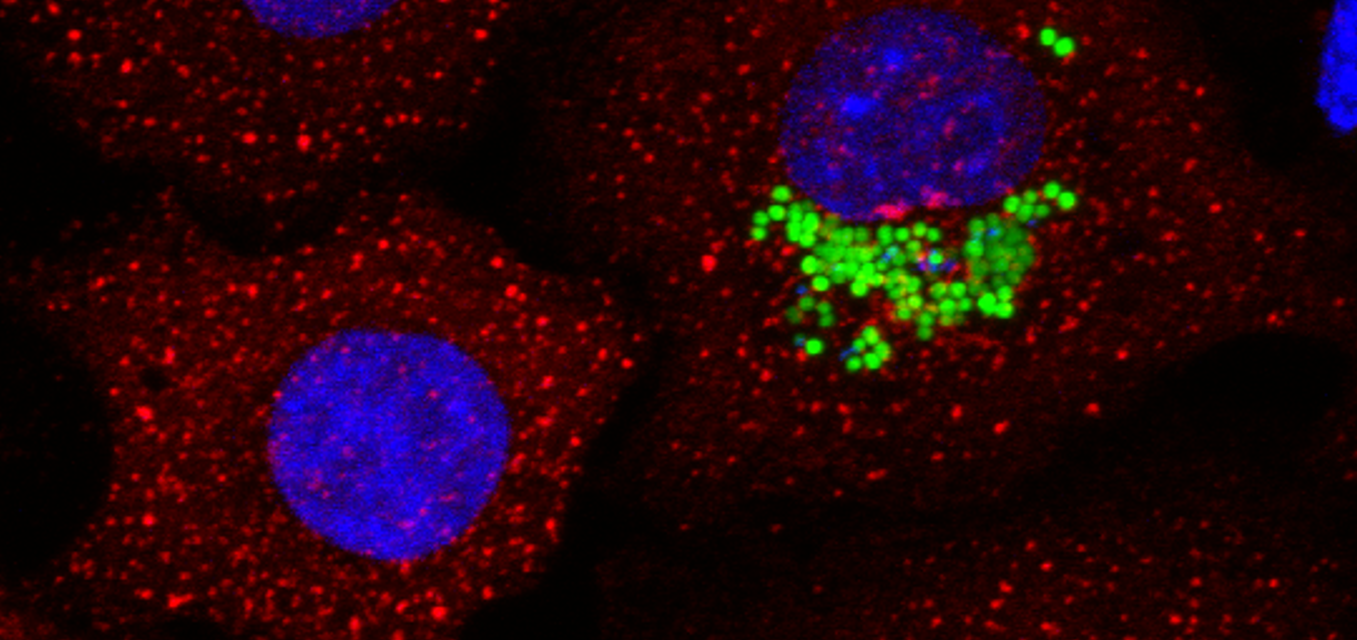
© A. van Krüchten

Influenzaviren sind Barriere-brechende Krankheitserreger, die zelluläre Signalwege ausnutzen, um ihre Replikation zu fördern. Wir haben die Raf/MEK/ERK MAPK Kaskade als entscheidend für die Virusreplikation identifiziert, was zu einem neuen anti-Influenza Ansatz mit sogenannten MEK Inhibitoren geführt hat. In der neuen Förderperiode werden wir nicht nur die Rolle des Signalwegs im ERK-vermittelten vRNP-Kernexport weiter untersuchen, sondern auch den kürzlich identifizierten Beitrag der immunmodulatorischen Aktivität von MEK-Inhibitoren für die antivirale und sogar antibakterielle Wirkung studieren.
Forschungsgebiet: Molekulare Virologie, Signalübertragung
Prof. Dr. rer. nat. Stephan Ludwig
Prof. Dr. rer. nat. Christina Ehrhardt (07/2012 - 06/2020)
Dr. rer. nat. Yvonne Börgeling (07/2020 - 06/2024)
Projektlaufzeit: Juli 2012 - Juni 2024
Originalartikel